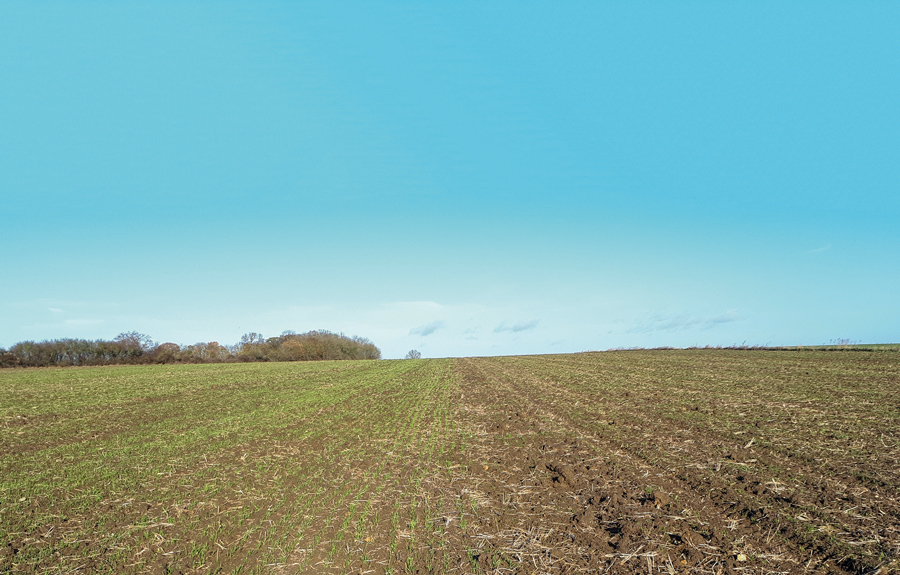Seed treatment re-think required
31st May 2019
As a result of neonicotinoid bans, growers may have to re-think their cereal agronomy strategies and use of seed treatments to ensure the best possible establishment and vigour this autumn, reports Heather Briggs.
As a result of neonicotinoid bans, growers may have to re-think their cereal agronomy strategies and use of seed treatments to ensure the best possible establishment and vigour this autumn, reports Heather Briggs.
The greatest challenge from the loss of Deter (clothianidin) will be control of the vectors of barley yellow dwarf virus (BYDV), including bird cherry aphid and rose grain aphid, warns Wynnstay Group crop protection manager Dr Simon Pope.
Autumn infection of winter wheat and barley can often result in yield losses of up to 50 per cent; in winter barley losses of 75 per cent have been recorded.
Dr Pope says: “To reduce the risk of BYDV transmission careful consideration should be given to destroying the ‘green bridge’.

Wynnstay Group crop protection manager Dr Simon Pope
“Volunteer cereals already carrying the virus can act as a source of inoculum; aphids feed on infected plants then migrate to newly emerged cereal crops and transfer the virus.”
Stubble management is important and it is not sufficient to rely on cultivation alone, since aphids can survive underground on plant remains and move to the new crop as it germinates and emerges, he adds.
“It is important to destroy the volunteer cereals with glyphosate before cultivation to ensure the aphid vectors are not buried with a food/inoculum source.”
Delaying drilling can be a useful strategy for many growers, particularly where aphids can be a problem. Although aphid vectors will still be on the wing and will migrate into crops and infect the plants they feed on, the rate of spread of virus within the crop will be reduced.
“The rate of secondary spread of aphids within a crop is greater at higher temperatures. By delaying drilling the crop is emerging into cooler conditions, so pressure should be lower,” says Dr Pope.
“The number of day degrees can be measured to assess the risk of secondary spread and numbers and species of aphid caught in suction traps are published, also aphid numbers in crops can be monitored.
“Taking all of this information into account enables a risk assessment and pyrethroid insecticides should be applied as necessary from the 1–2-leaf stage of the crop and possibly earlier in high risk situations.”
Repeat applications could be required if aphid numbers are high and temperatures remain mild, he advises, warning that there is increasing resistance to pyrethroids being reported in grain aphids.
Later drilled
Getting later-drilled crops up and away is crucial, says Wynnstay Group combinable seed product manager Jonathan Baxendale.
“When Vibrance Duo (fludioxonil + sedaxane) is used on winter wheat we find it gives the crop a boost to get out of the ground, and it emerges with better roots and tillers. This helps resilience against aphids.”

Wynnstay Group combinable seed product manager Jonathan Baxendale.
He expects more growers to resort to foliar sprays, too.
However, Vibrance Duo does not currently have approval for barley, so he recommends biostimulants containing magnesium, zinc and phosphite, such as in Kick-Off, to help seed development and vigour.
“The good news for growers in areas of high aphid pressure is that there are two new 6-row barleys with BYDV tolerance – Amistar and Rafaela (from KWS and Limagrain respectively) – which will both be available this year for UK growers.
“In addition, in the pipeline there are more 6- and 2-row varieties.”
Nevertheless, he adds, the loss of Redigo Deter (clothianidin + prothioconazole), which helped control both BYDV and wireworm, will be felt.
“For wireworm control in the West, people are likely to swap to Austral Plus (fludioxonil + tefluthrin) or Signal 300 ES (cypermethrin) for this autumn. However, Austral Plus has a last use date of spring 2020, so we will be left with Signal 300 ES, which is only approved for autumn use.
“This means growers will have no products to control wireworm in spring when they bring grassland back into the rotation.”
On take-all, he notes that farmers have had good results when they have used Latitude (silthiofam) for moving between second and third wheats, plus when they have planted barley after another cereal.
“The benefits outweigh the costs of the seed treatment, which, after all, is the only tool in the armoury.”
Root boost
Delaying drilling winter wheat because of a late harvest or to keep control of black-grass levels means the crops can be challenged with a shorter growing time frame. This means they need to be up and away as soon as possible, according to Syngenta seed treatment portfolio manager Sam Brooke.
Under such circumstances she recommends using Vibrance Duo, adding that one of its actives, sedaxane, will help the crop develop better roots to scavenge for water and nutrients.
“It is important to choose a seed treatment which does not delay germination while improving crop vigour and tillering,” says Ms Brooke. “It can help minimise losses if drought stress occurs as treated crops have better green leaf retention.”
In addition, company trials undertaken over 4 years showed a yield increase of 230kg/ha compared with the base treatment. When drilling was delayed the difference was even bigger, reaching 340kg/ha, she reveals.

Syngenta seed treatment portfolio manager Sam Brooke.
Four years of research was undertaken using 18 sites with replicated plots, plus, in 2018, split field farm trials.
“By using plots of 1ha across the company, these farm trials looked at what would happen on a commercial scale.”
In 2017, studies carried out on light land, examining effects of strategies such as ploughing, min-till and no-till found the product to work equally well in all cases.
In addition, there was an overall 7 per cent improvement in black-grass control, she notes.
“Using a seed treatment such as Vibrance Duo is comparable to taking out an insurance policy; you never quite know the challenges your crop may have to face up until harvest, so you need to give it the best start possible.”

